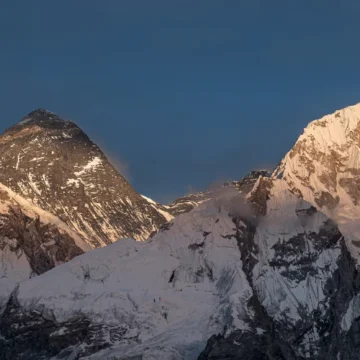
Nepali Cuisine Highlights: Top Foods & Drinks You Must Try

Table of Contents
What is the first thought that comes to your mind when you think of Nepal? Nepal is a country rich in culture, tradition, festivals, Nepali cuisine, natural beauty, geography, and Nepali hospitality. Additionally, Nepal is home to some endangered species of plants and animals, which is also an attraction point for many researchers and nature enthusiasts. Likewise, Nepal is home to the world’s highest peak, Mount Everest (8848.86 meters), and seven other mountains over 8000 meters.
Many tourists visit Nepal to experience its multiethnic aspects. Nepali food culture is influenced by Tibet and India, but it is also popular for its own unique traditions and food. Dhindo, buckwheat roti, chowmein, etc., are some examples of Tibetan cuisine, and roti, chapati, panipuri, etc., are influenced by India. Not only that, but foreign cuisine has also influenced Nepalese food. For exploring Nepali spices, Nepal is an ideal destination for many.
Top 10 Popular Best Nepali Foods
Mo: Mo

The Mo: Mo Nepali dumplings are the most popular Nepali food and widely preferred food in Nepal. It is a go-to food for most Nepalis. Mo: Mo is a dumpling wrapped in dough made of flour and filled with different stuffings. The stuffing can be made out of minced vegetables for vegans or minced meat of chicken, buff, or mutton. The aroma, taste, and flavour of stuffing and spices make the food the most sought-after food in Nepal.
Some of the popular MO: MO brands in Kathmandu are ‘Narayan Dai ko Masangalli ko Famous Mo: Mo‘, ‘Shandar Mo: Mo‘, ‘Delicious Mo: Mo‘, ‘Everest Mo: Mo‘, etc.
Dal Bhat
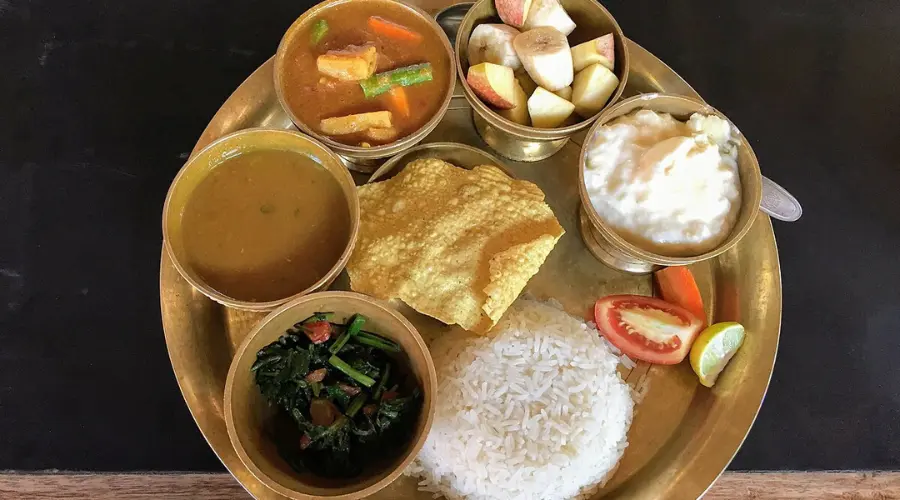
If not the most popular, Dal Bhat is the most widely consumed food in Nepal. It comprises lentil soup (dal), rice (Bhat), curry made out of fresh vegetables (tarkari), pickle, ghee, meat or fish (according to preference), etc. The food is packed with nutritional values that provide energy to last for the day. A proverb that is famous in Nepal says, “Dal Bhat Power, 24 Hour.”
Yomari
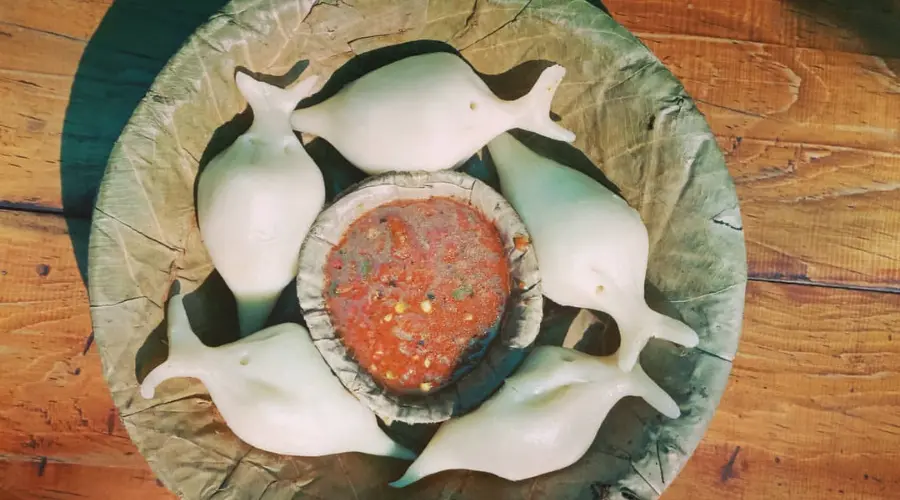
One of Nepal’s most famous Nepali food is Yomari. It is a traditional Newari food delicacies. Yomari is made of filling dough made of rice flour with chaku (jaggery) or khuwa (made from milk) and sesame seeds. The food is generally made on special occasions but can be eaten in different locations in Kathmandu Valley throughout the year.
Sekuwa
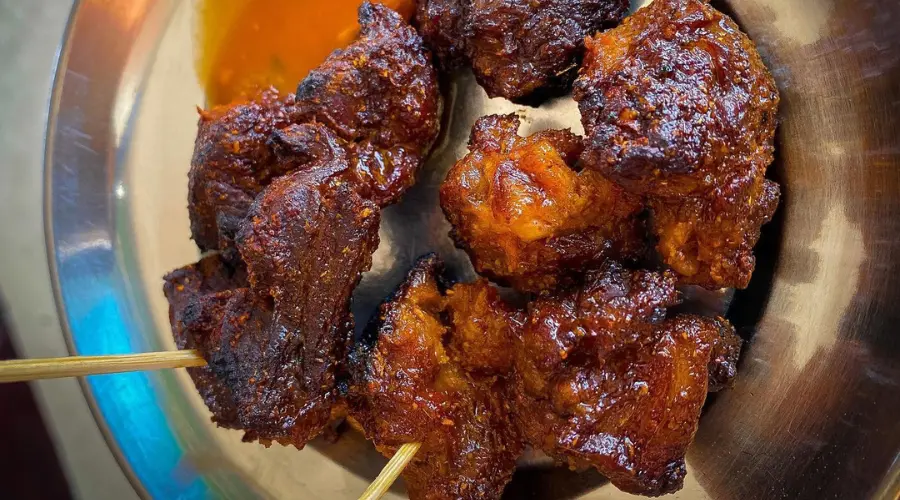
A Sekuwa is a delicious spicy meat. The meat (buffalo, chicken, or pork) is first marinated in spices such as cumin, garlic, ginger, chilli, coriander, and other spices according to your preference and finally grilled over fire. The tenderness and juicy meat, with the flavour of fire and smoke, make the food tasty and a must-have in festivals, gatherings, or a normal eatery.
‘Bajeko Sekuwa‘, ‘Tareba Restaurant and Sekuwa Ghar‘ and ‘Aunty’s Sekuwa‘ are some popular sekuwa spot in Nepal.
Choila
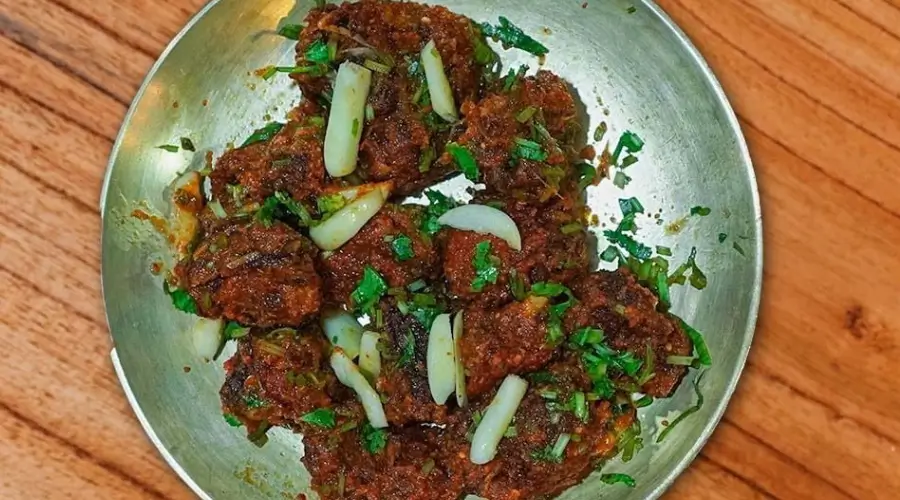
A Newari cuisine, Choila is prepared from meat, mainly buffalo meat, but chicken or mutton can also be used. Choila is generally prepared in Newari traditional parties, but the food has been gaining popularity among others, too. The meat is first grilled on fire and then mixed with different spices. It is normally served with chiura (beaten rice).
Thukpa
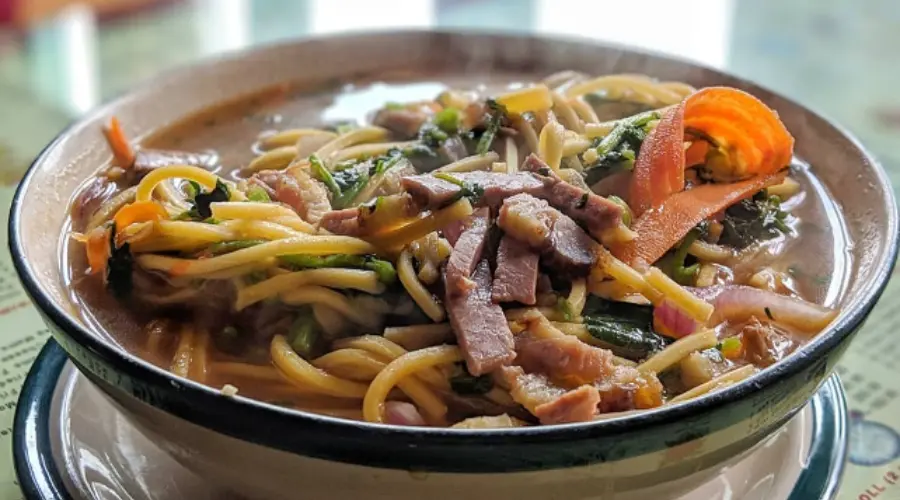
Inspired by Tibetan culture, thukpa is a dish made from noodles. Boiled noodles are added to a broth made of meat, vegetables, and other spices. The food is mainly consumed during winter. It satisfies one’s hunger and provides warmth and energy for the body.
Sel Roti
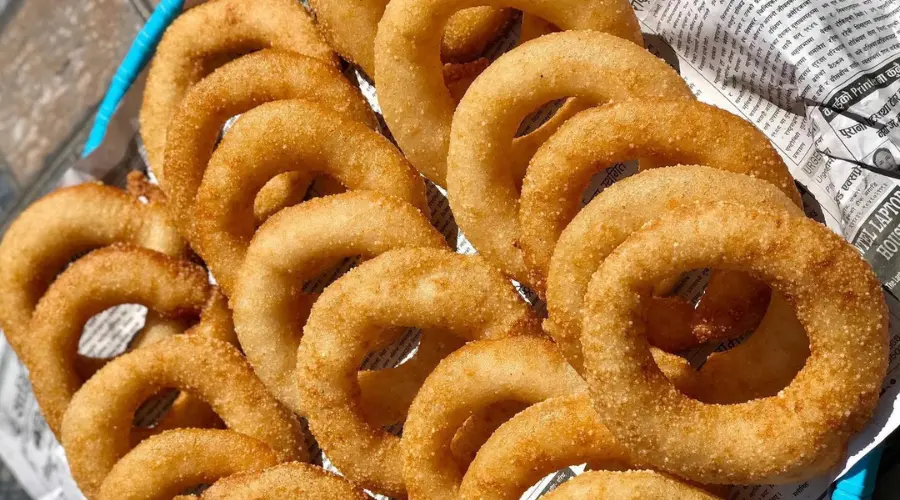
Nepali Roti or Sel Roti is a traditional food prepared for different festivals, mainly Dashain and Tihar. Sel Roti is famous among Newar, Bahun, Chhetri, and various ethnic communities in Nepal. It is made by mixing rice flour with sugar, butter, cardamom, or coconut (optional, for flavour) and deep-frying in oil. Sel is also used as a ‘Koseli/souvenir’ in the Nepali community. It can be used as a snack or for breakfast along with tea.
Gundruk
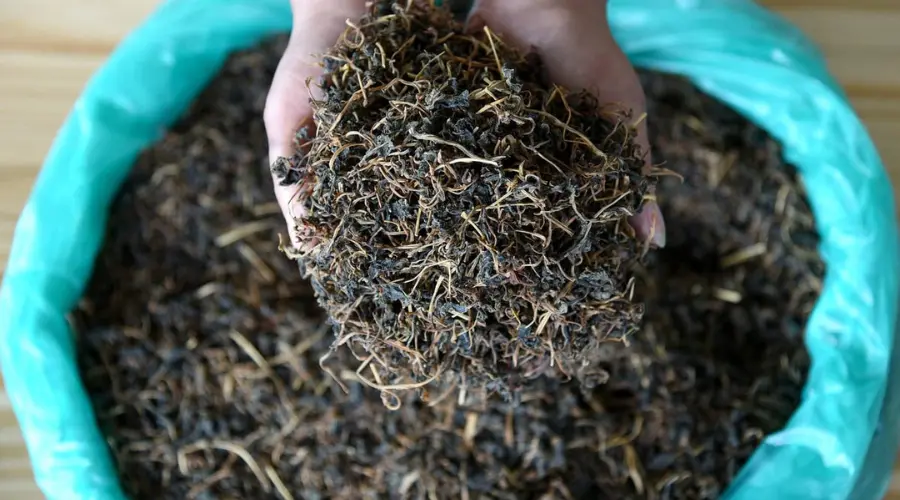
Dried spinach, Gundruk, is a popular local food in Nepal. It can be used for making curry or pickles. Gundruk is prepared by drying leafy vegetables like mustard, radish, etc., in the sun until they are dried. Then, it is added to soup and stews, giving it a tangy flavour. Likewise, it can be soaked in water for a few hours and mixed with chilli, Bhatta/Bhatmas, tomato, and spices to make a tangy-spicy pickle.
Dhindo
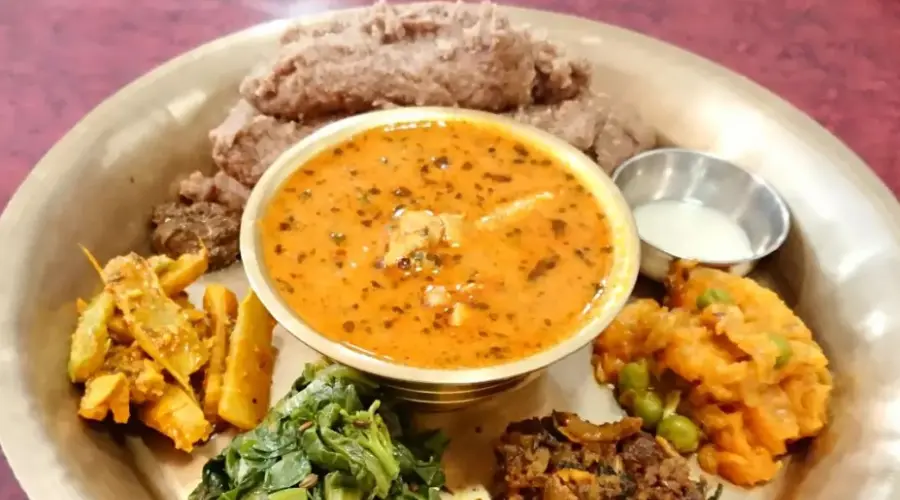
A traditional Nepali dish influenced by Tibetan culture, Dhindo is the surplus and exclusive food for a few in Nepal. Mainly, the food is widely consumed in the Himalayan region of Nepal. However, the popularity has been increasing; many restaurants and Nepali restaurants also serve thakali meal Nepal.
Dhindo is cooked from buckwheat, millet, or maize flour in boiling water and stirred continuously until it becomes thick like pudding. It can be served with gundruk, meat curry, vegetable curry, or yogurt.
Bara
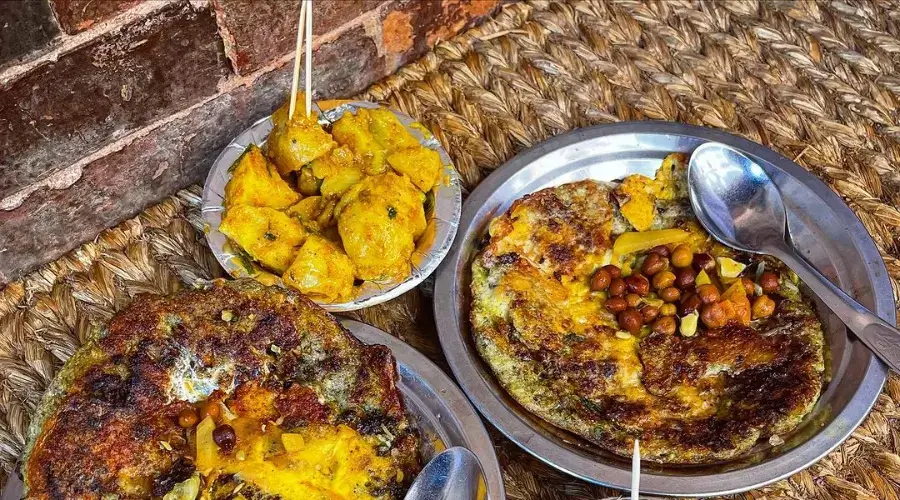
A Bara is an authentic Nepali food prepared by mincing black lentils (mass dal/urad dal). Then, the black lentils are made into small round pancakes and fried. For taste, they can be mixed with egg, meat, or vegetables. Bara Nepali food is generally served with a pickle (achar/chutney) or chiura in Bhoj (party).
Best Nepali Breakfast Food
Sel Roti
Sel Roti is a famous vegetarian Nepali dishes that is prepared for festivals. Moreover, the food is usually consumed with tea for breakfast in the local community.
Buckwheat Roti
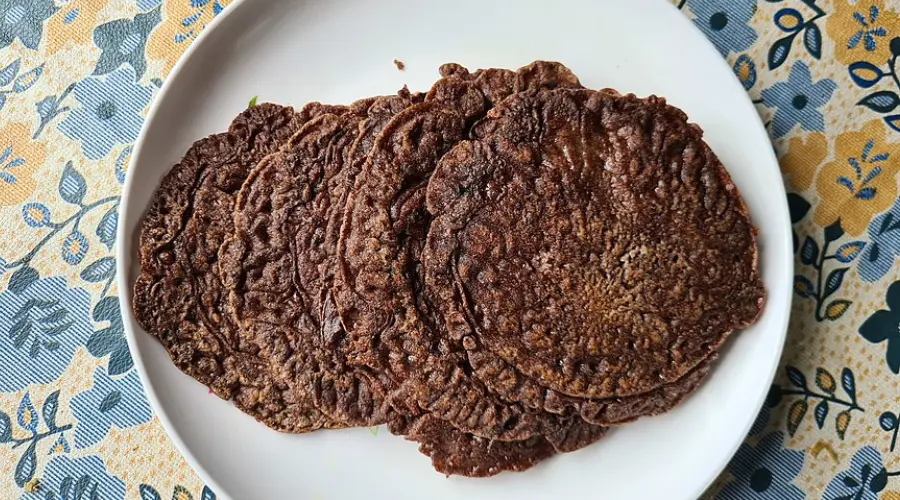
Faparko Roti, or Buckwheat, is a popular and nutritious food that is eaten by Nepali people. Primarily, the food is preferred by the people living in the Himalayan region and farmers. It is made from buckwheat mixed in water and made slurry. Then, cooked in a hot pan, with or without oil.
Tibetan Bread

Gurung/Tibetan Bread is made from wheat flour, water, and baking powder. Firstly, the dough is made by mixing the ingredients and then rolling and cooking in a pan until golden brown. It is eaten for breakfast as well as snacks.
Pani Roti
Pani Roti is one of the easiest and most eaten vegetarian Nepali dishes for breakfast. It is basically wheat flour mixed with water and a pinch of salt or sugar. The mixture is made into a slurry, then cooked on a tawa, and covered with a lid.
Kodoko Roti
The name itself identifies the roti. The cooking process is the same as that of buckwheat roti; the only difference is the main ingredient, Kodo/millet. The roti provides enough calories to sustain one for the day, depending on the amount consumed.
Gwarmari
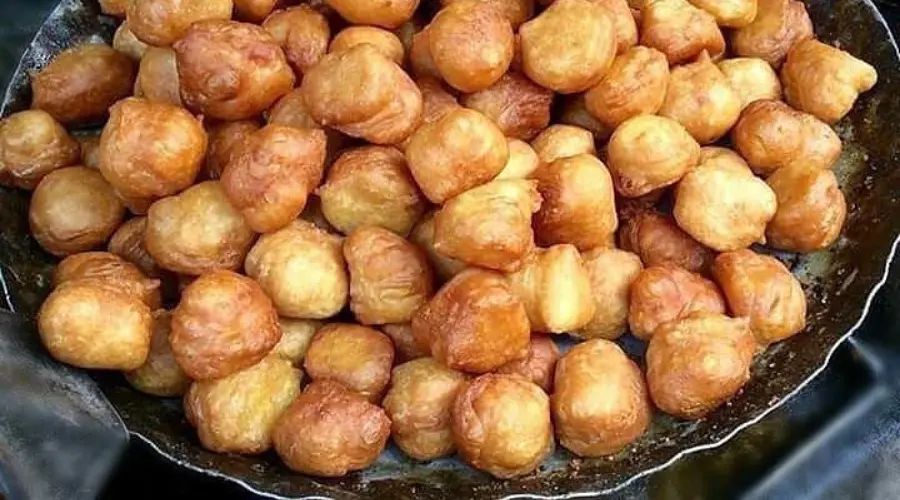
A Gwarmari is another authentic Nepali food culture in Kathmandu. It is a Newari food delicacies prepared by deep frying dough made from a mixture of flour, water, and salt/sugar for taste.
Traditional Nepali Food
Kwati
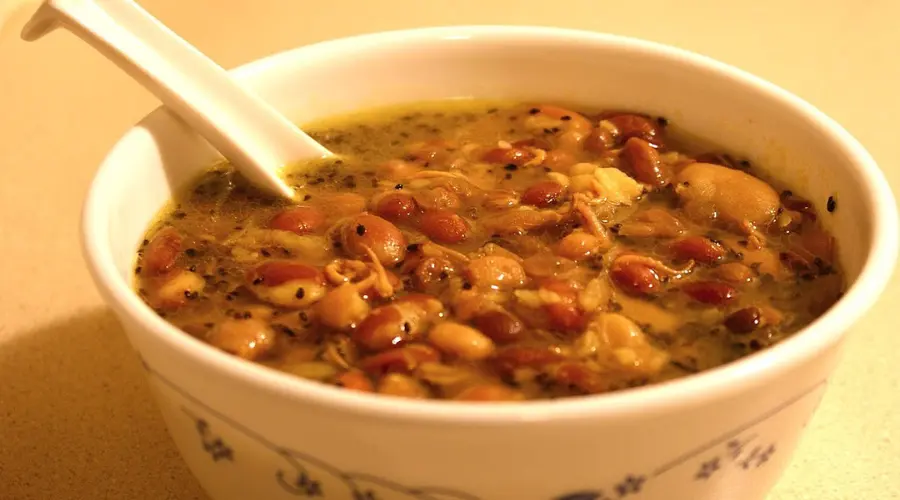
A Kwati is a special dish prepared in Janai Purnima (Raksha Bandhan/Gaijatra) in Nepal. Different beans are soaked in water and left to sprout. Then, they are cooked and eaten. The food is eaten pre-winter season as a preparation for winter, as Kwati is rich in protein and carbohydrates.
Sel Roti
Sel Roti is cooked at major festivals and shared among friends, family, and neighbours. It symbolizes the bond between friends, family, and neighbours and promotes social and traditional bonding.
Yomari
Yomari is mainly prepared on the occasion of the Yomari Purnima festival. The festival indicates the end of the rice harvesting season. Yomari is the symbol of a good harvest and a thanksgiving to the Gods for a good harvest.
Chaku/Jaggery
Chaku/jaggery is a sweet Newari cuisine made from sugarcane juice. The juice is boiled, concentrated, and made solid. The sweet is used mainly during the Maghi Sakranti festival. It is also used to prepare various foods like sesame laddu and arsa (a sweet roti). Chaku provides warmth and energy during winter.
Dhikri

A Dhikri is also specially made during Maghi Sakranti, symbolizing simplicity and an offering to the deities by the Tharu community. The Nepali cuisine recipes for dhikr involve first mixing rice flour with water and making it into different shapes. Then, it is steamed and eaten with achar (pickle) or curry.
Bagiya
Bagiya is a traditional Nepali dish made from rice flour and filled with lentils and other ingredients. It is rich in protein and often consumed with achar or curry. It is famous within the Tharu community and is prepared on the occasion of the Jitiya Festival, which is celebrated for the well-being of children.
Rilduk
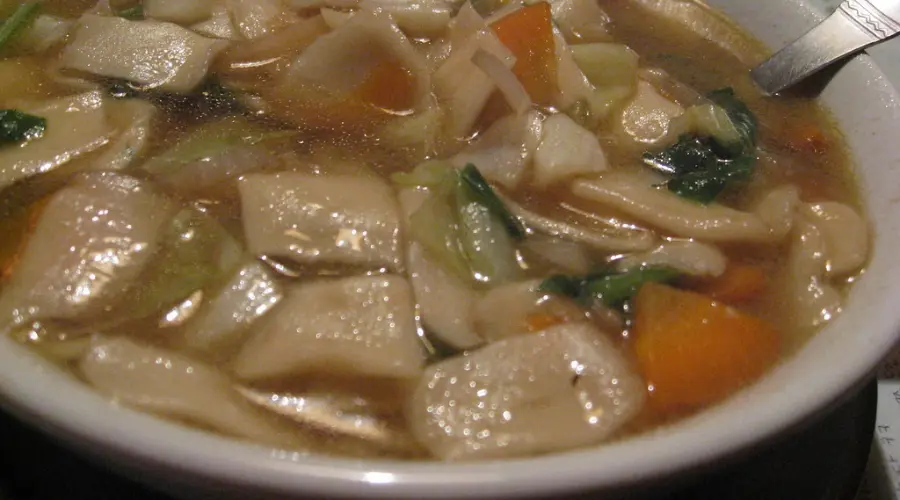
A Rilduk is a popular Tibetan and Sherpa traditional potato dumpling dish that reflects the use of local ingredients and adaptation to high altitude. Boiled potatoes are mashed, mixed with spices, and shaped into dumplings. Then, the dumplings are boiled or steamed and eaten with meat or stew. The food is rich in carbohydrates, providing warmth to overcome cold.
Batuk
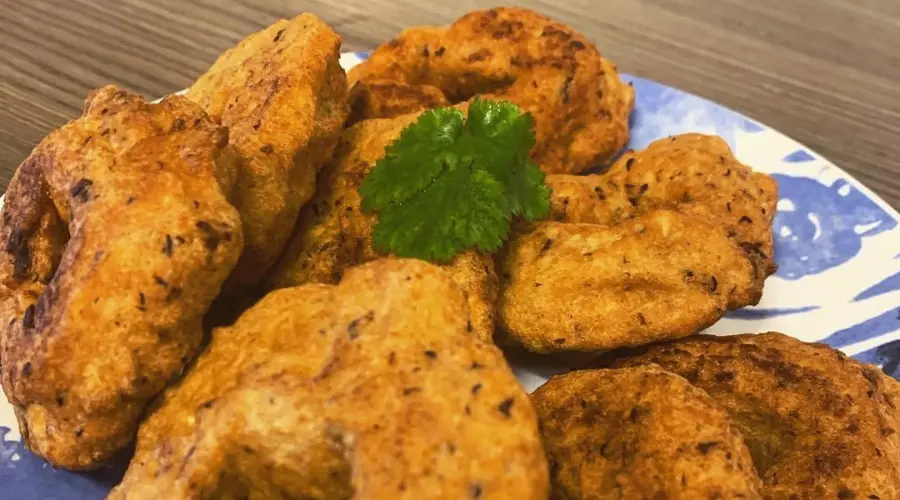
A Batuk is a dish made from black lentils (urad dal) and spices. The lentils are soaked and ground and the dough is prepared. Then, the dough is deep fried until golden brown and consumed as breakfast, snack, or appetizer with achar. This traditional dish is generally prepared during festivals and family get-togethers, symbolizing hospitality toward guests.
Aalu Tama
Aalu Tama is a common and delicious food in Nepali households. It is a fusion of various ingredients like aalu, bamboo shoots, black-eyed peas, and spices. The cooked Aalu Tama Nepali food is a blend of tangy and sweet tastes, showcasing the beauty of Nepali cuisine.
Lakhamari

A Lakhamari is a traditional Newari ceremonial sweet. It is exchanged between friends and families during celebrations and weddings. It is an offering made to wish good fortune. Different-shaped dough is deep-fried and coated with sugar syrup to give it a crispy, sweet taste. Varieties of lakhamari are authentic Nepali desserts and sweets.
Furaula

A Furaula is a traditional Nepali dishes made from minced lentils fried in ghee or oil. It is another festival food consumed, especially during Maghi Sakranti. Like Sel Roti, it carries significant traditional values and promotes the use of local ingredients.
Nepali Appetizers
Nepali foods or appetizers are a perfect blend of flavours and fresh local ingredients. One of the most popular appetizers in Nepal must be Mo: Mo. Likewise, spicy, tangy Sadeko Sukuti and Sadeko Badam are another popular appetizer. Sadeko Sukuti is dried meat mixed with tomatoes, onion, garlic, ginger, green chilli, cilantro, mustard oil, lemon juice, and spices. Similarly, Sadeko Badam is prepared by mixing roasted badam with lemon juice, onion, tomato, mustard oil, and spices.
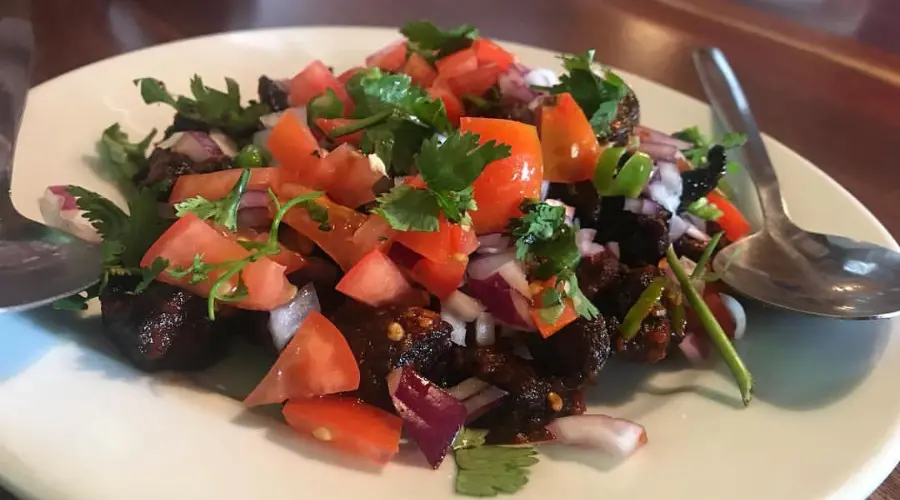
Additionally, Bhatta or soybean, is a go-to appetizer in Nepal. It is first fried in or without oil, eaten as it is, or prepared Sadeko Bhatta. Bhutan, Choila, and Kachila are other traditional Nepali appetizers. Bhutan is a dish prepared by frying the buffalo or mutton offal (generally liver, intestine, kidney, and heart) with spices and other ingredients. Kachila is freshly minced meat mixed with chopped onion, tomato, garlic, ginger, green chilli, and cilantro; you can cook the meat a little in a pan or fire if you want.
Pakauda/Pakora and Mustang Alu can also be taken as appetizers and popular Nepali street food. Pakauda is prepared by mixing sliced vegetables (potato, onion, cabbage, etc.), chickpea flour, spices, and water. Then, the mixture is deep-fried in oil and served with achar or ketchup. Similarly, Mustang Aalu is a boiled potato with a thick outer covering that is then roasted and mixed with various vegetables and spices.
Nepali Main Dishes
When talking about Nepali Main Dishes, the first main course that comes to mind is Dal Bhat. The national food of Nepal, Dal Bhat Nepali food, is the primary surplus here. Likewise, is Dhindo. One fun fact about Nepali main dishes is that sometimes people opt for MoMo Nepali food and chowmein as the main dish.
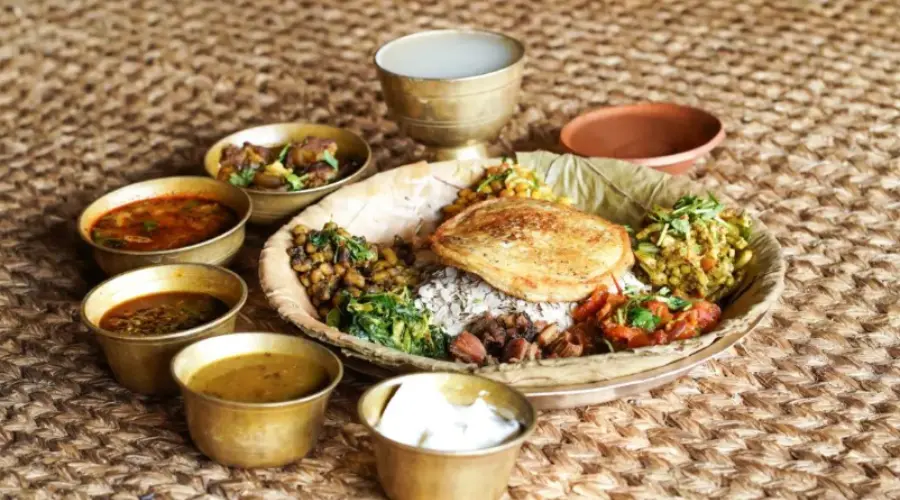
Another popular main dish in Nepal is the Newari Set (Samya Baji). It is a gourmet dish platter from the Newari community. Baji refers to Chiura (beaten rice), and Samya refers to time, meaning food eaten during happy times or celebrations. The Samya Baji usually comes with chiura, mean, boiled egg, choila, potato salad, Bhatta, aalu tama soup, pickle, fried fish, and salad. Sometimes, the platter also includes spicy radish pickles, green leafy vegetables, chatamari, etc.
Chatamari is a Nepali pizza. The dough is made from rice flour, and toppings include spices, chopped onion, coriander, minced meat, or eggs.

Nepali Desserts and Sweets
You have a satiating appetizer and main course, but who does not have a place for desserts? Nepali deserts reflect the country’s culture and Nepali culinary heritage. One of the most common and simplest Nepali desserts is yomari, dahi chiura (mixed yogurt and beaten rice, fruits, and sugar can be added as per your taste), and Juju Dhau. ‘King of Curds’, Juju Dhau is an authentic Newari dessert.
Other popular desserts in Nepal are Chamre/Latte Bhat and Khir. Latte or chamre bhat is rice flavoured with ghee, sugar, and spices like green cardamom and cloves, usually garnished with nuts and raisins. This sweet dish is usually served at ceremonies, weddings, and other special occasions, and religious celebrations are always completed with it. Chamre is generally cooked on the first day of Magh.
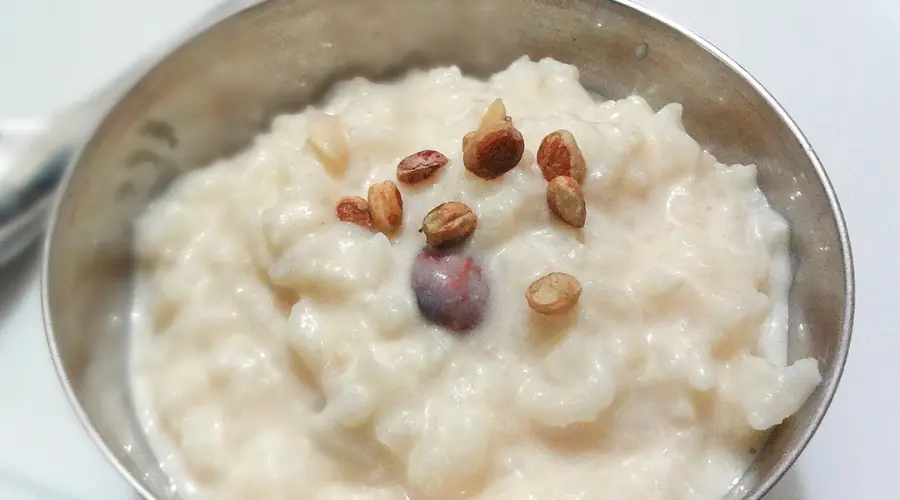
Another all-time favourite is Khir, which is normally prepared during the month of Shrawan in Nepal. It is made from slow-cooked rice in milk until thick; this is sweetened with sugar and ghee flavoured with cardamom and saffron. Crisp and crunchy nuts on top, Khir is a part of all festivals, some religious functions, and other functions and is offered to deities as Prasada during Pooja.
Nepali Local Drinks
Raksi: Nepali Rice Wine
A Raksi is a Nepali-made, original, fermented rice or millet-based country alcohol. Raksi is a colourless and potent drink that is consumed mostly during celebrations and parties. It is widely popular for its strong flavour, which fills the consumer with warmth. It is also widely used as a sagun (auspicious gift) in many Nepali traditions.

Tongba: Himalayan Brew
The tongba is one of the most famous traditional liquors in the Himalayan areas, especially among the Limbu community. This drink is prepared by fermenting millet and is either served in a wooden or bamboo utensil. Hot water is poured on the fermented grains to make a warm and somewhat alcoholic product.
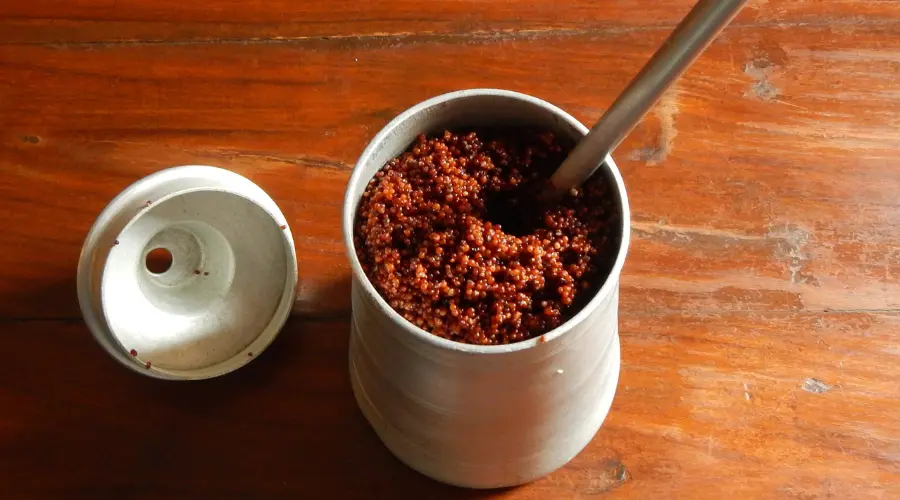
Chhyang: Cultural Drink
The Chhyang is a homemade fermented rice drink popular in the mountainous areas of Nepal. It is mildly alcoholic and is drunk mainly during festivals, rituals, and other ceremonials. Chhyang has traditional significance and a relatively cool and slightly sour taste.
Lassi: Nepali Yogurt Drink
The Lassi is a popular Nepali drink made from yogurt. It provides a feeling of refreshment and coolness, especially during scorching summer. It is prepared by mixing sour or sweet yogurt with other flavours such as fruits, spices, and salt.
Nepali Tea Culture
Nepal is popular for its Nepali tea culture. It is a way of representing hospitality and a warm welcome for the visitors, especially in remote areas of the country. We have a culture of asking for tea or water to the foreigner here. There are many varieties of tea served in Nepal, such as black tea, green tea, and spiced masala tea. Nepali tea is especially known for its unique flavour and aroma of that tea. Tea consumption is an inseparable element of people’s everyday routine, consumed at home, in tea shops or during meetings.

Nepali Alcoholic Hard Drinks
Nepalese alcoholic hard spirits are part of the cultural and social traditions and are drank during festivals, ceremonies, and get-togethers. Raksi is a rice wine, which people believe has a highly spirited taste and induces heat in the body. Chhyang is a slightly fermented alcoholic rice beer that originated in mountainous areas and is well admired for its coolness.
Aila, Tongba, and Jaad are other authentic traditional Nepali alcoholic drinks. Aaila is a strong fermented alcoholic beverage that holds a special place in Newari culture and rituals. Jaad is a home-brewed rice, millet, or barley brew taken during festive occasions. Likewise, Tongba is a slightly alcoholic warm millet drink prominent in the Himalayan areas.
Nepali Soft Drinks (Non-Alcoholic)
Soft drinks in Nepali provide a surprise to the palate in a very tasty way and are closely related to Nepali cuisine. Nepali Masala Tea is a unique spiced blend of black tea and milk flavoured with aromatic spices, which offers warmth. Similarly, Nepali green tea has a delicate taste and is quite popular due to its rich antioxidant content. Likewise, it is Tibetan tea. It is also known as butter tea, which is entirely different from the common tea in terms of its taste and the energy it provides.

Additionally, Lassi, Mohi, Shikanji, smoothies, and bubble tea are other Nepali soft drinks. Lassi can be taken with the addition of fruits or spices. A smoothie is made with fresh fruit and yogurt, while a bubble tea is mixed with chewable tapioca balls. Mohi (buttermilk) is a local Nepali soft drink made from churned yogurt and water. The mixture is stirred until butter and a tangy liquid is separated. The tangy liquid has a cooling property, which gives refreshment during summer. The other drink that is quite famous and is typically served in the hot summer is the Shikanji, a spiced tea made from lemon.
Health Benefits of Nepali Food
Nepalese foods are filled with balanced macronutrients and micronutrients. A typical Nepali food, Dal Bhat, consists of protein, carbohydrates, vitamins, and minerals, providing enough calories to function for the day. Dal provides protein, Bhat is rich in carbohydrates and vitamins, and another tarkari is full of iron, potassium, minerals, etc. It is the most common food intake for Nepali people. So is the Dhindo.
Likewise, Mo: Mo, made from minced meat, is rich in protein, and the dough is rich in carbs. The pickle that comes with it adds to the nutritional constituents. Moreover, Gundruk is rich in Vitamins, as it is made from green leafy vegetables. Additionally, choila and sekuwa Nepali food are rich in protein.
Overall, in terms of the health benefits of Nepali food, Nepali cuisine is a perfectly balanced diet that provides enough energy to complete daily chores. One or the other food provides one of the nutritional values that helps you stay strong.
Want to know more?
Speak to an Expert





Sandip Dhungana
Nepal 🇳🇵
Whatsapp: +977-9823636377


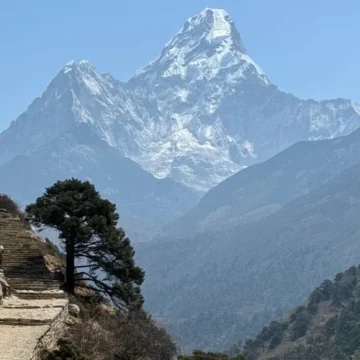
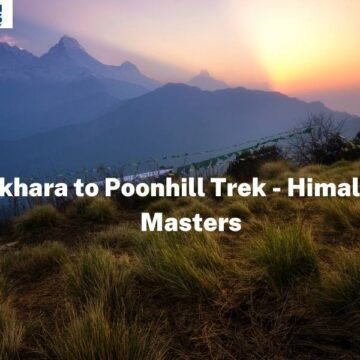

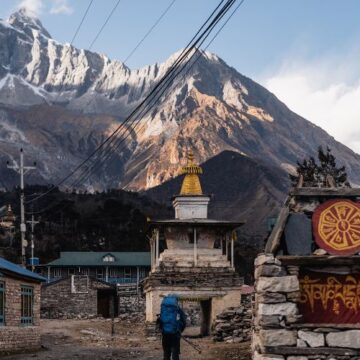
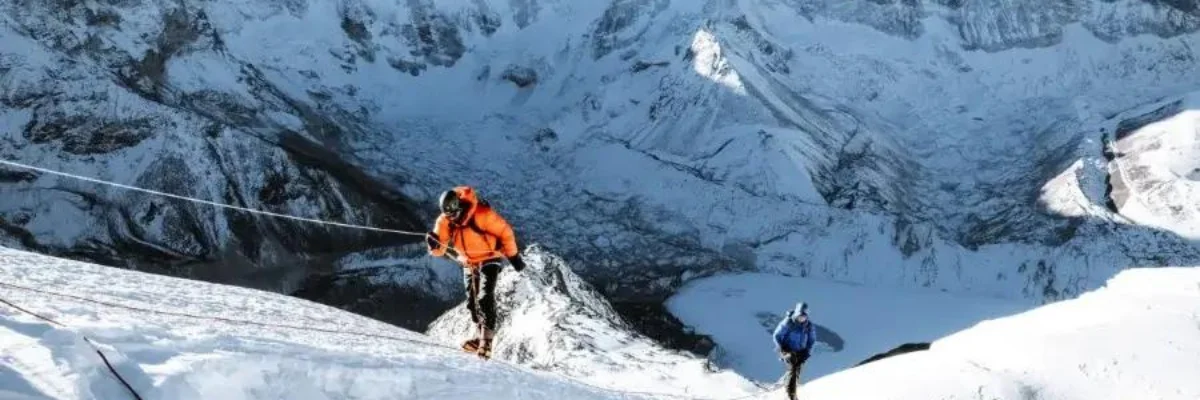
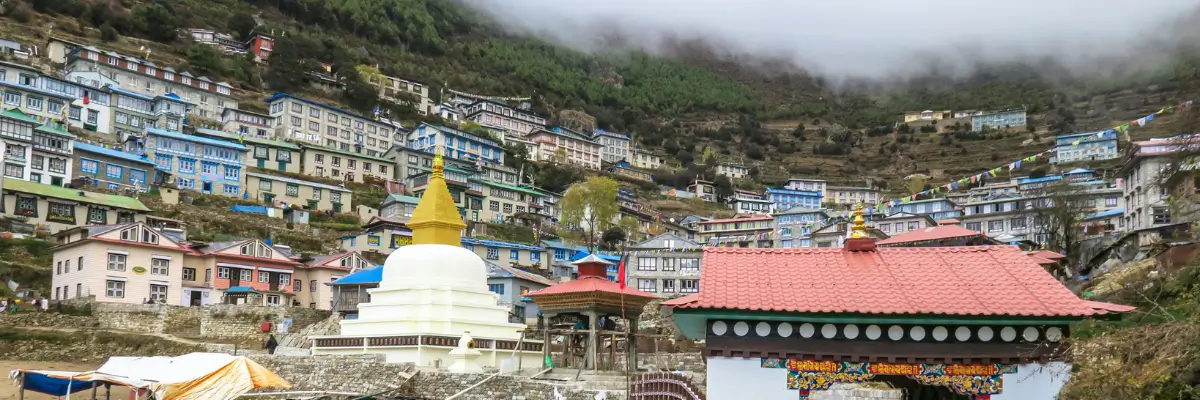
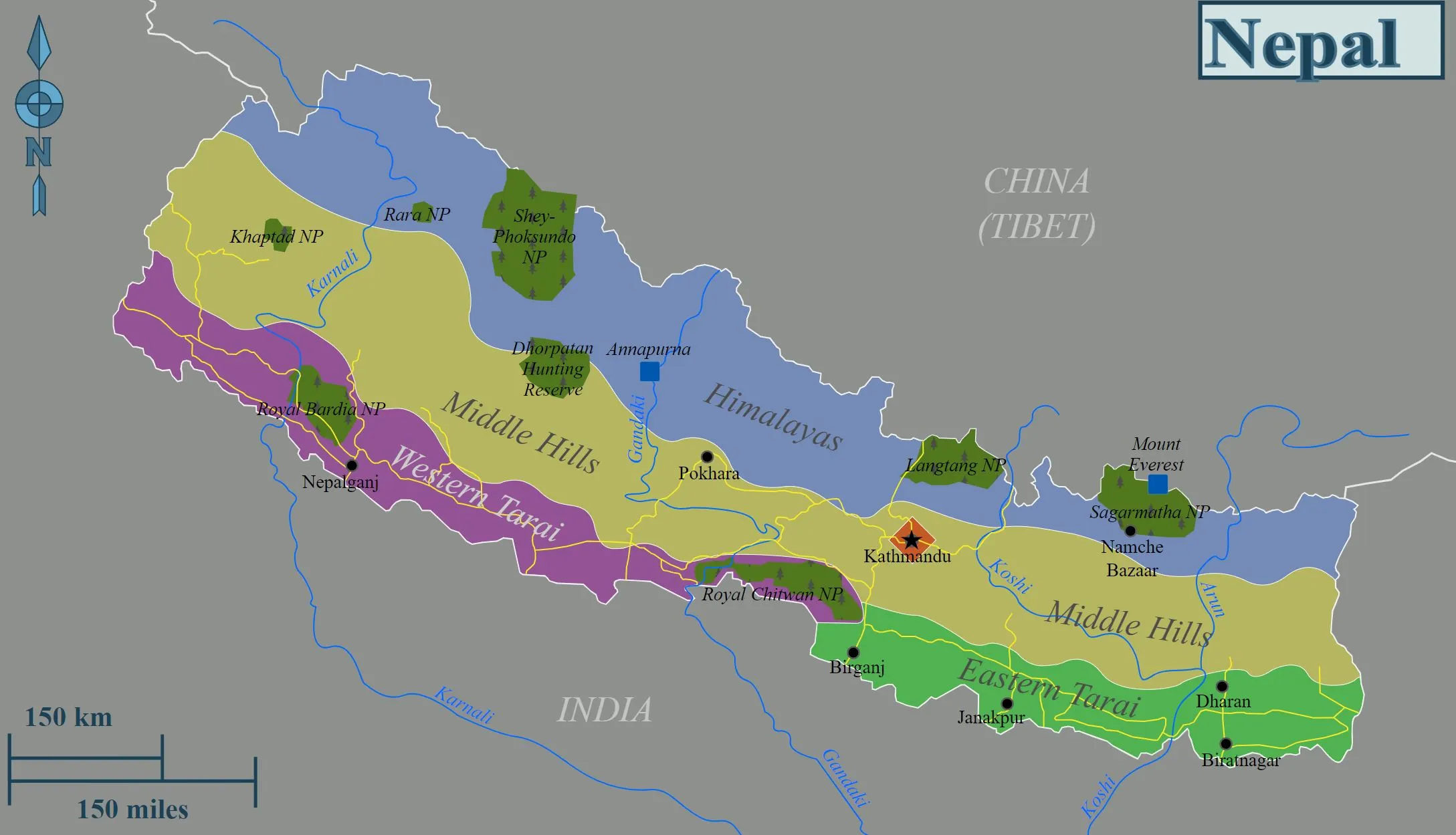









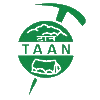

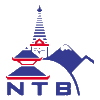


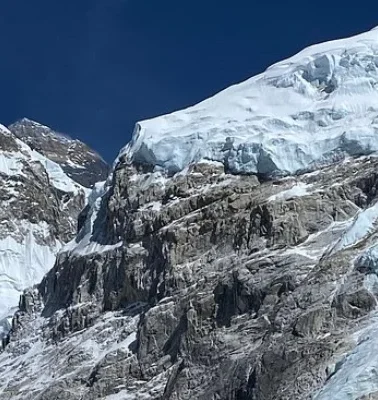
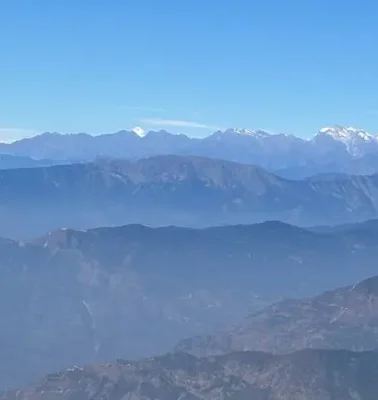

Leave Your Comment